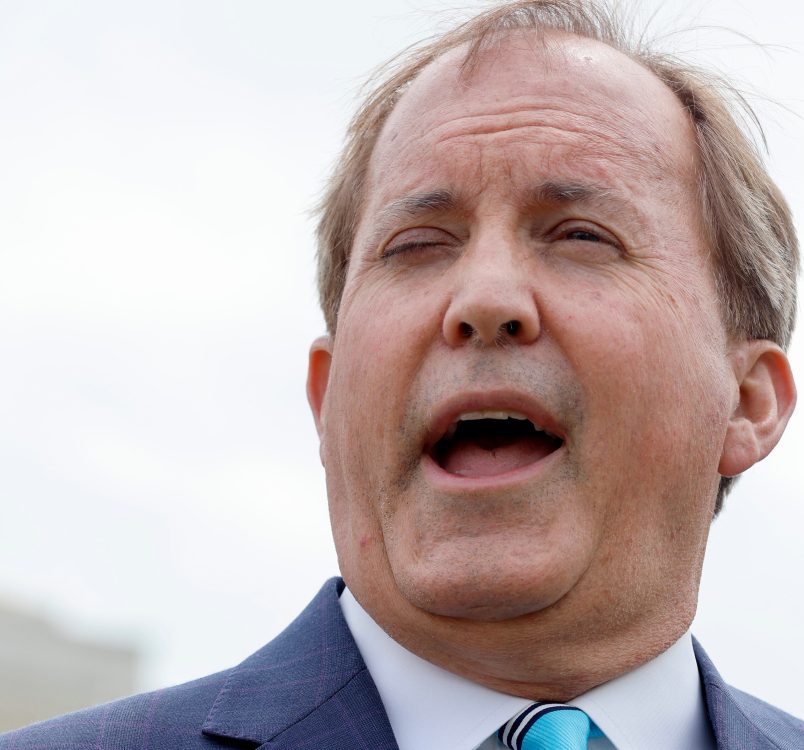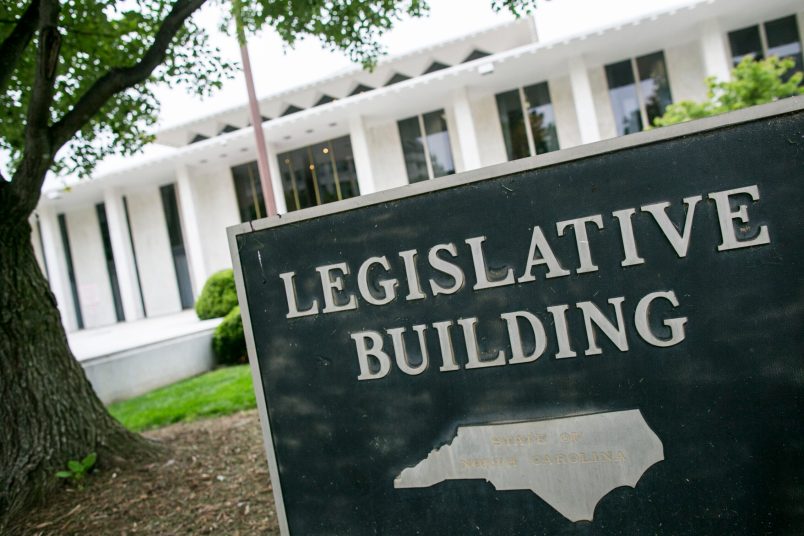Medicaid, one of the key programs undergirding the social safety net, is currently surrounded by threats from all sides.
Expanded access to the program born from the COVID-19 pandemic is ending, leaving millions of people at risk of losing coverage. House Republicans — or at least the former Trump administration budget official they’re brought on in an advisory capacity — are eyeing cuts to the program. Meanwhile, the Supreme Court is still mulling a lawsuit that could hobble Medicaid as we know it.
The White House and congressional Democrats are flooding the airwaves with their intent to preserve the program, the better to draw a contrast with Republicans as both sides prepare to release their budget proposals.
The budget fight is coming as states grapple with a huge change to Medicaid.
At the same time that President Joe Biden and congressional Republicans head towards a potential standoff over social safety net programs, there’s a massive policy change to the program that is already in motion, and will affect tens of millions of Americans this year. It will also provide a window into how GOP-run states manage a rollback of the program that will likely be jarring for American families.
There should be a more exciting way to describe this policy given the stakes. But for now, all we have is its official title: Medicaid Continuous Enrollment.
In March 2020, with COVID-19 exploding around the U.S., Congress passed a law making it so that those who received health insurance coverage via Medicaid could not be booted off the program, unless they chose to leave or move away from their state. The moratorium on people being removed from Medicaid received bipartisan support at the time as part of a bill which also mandated two weeks paid sick leave; in the face of the pandemic, members of both parties agreed to support what would have otherwise been unthinkable expansions of the welfare state as an emergency measure.
It was a seismic change. People who received Medicaid for otherwise brief life circumstances — job loss, pregnancy, or other factors that drove them below the poverty line — would now stay on the program, without losing access, even if the circumstances in their life that led to them qualifying to receive Medicaid changed.
Take the example of a hypothetical Texas mother who had a child in 2020. In the Lone Star state, which has yet to pass the Affordable Care Act expansion, Medicaid kicks in at 16 percent of the poverty line. But for pregnant women, Texas offers Medicaid at 203 percent of the poverty line. Under Continuous Enrollment, these Texas women continued to receive Medicaid even after giving birth.
As part of its end-of-year budget bill Congress passed a provision mandating the end of Continuous Enrollment.
It’s a huge shift, Sara Rosenbaum, a professor of health law at GW, told TPM. Medicaid insured 75 million Americans on the eve of the COVID-19 pandemic; now, with Continuous Enrollment, 90 million are on the rolls.
“That’s one in four Americans affected,” Rosenbaum said.
The looming cliff portends a potential crisis as some states work to ensure that those affected have the opportunity to find new means of insurance, and other states unceremoniously dump people off the rolls.
And one that’s ripe for exploitation by red state governments.
Per the Biden Administration, more than 15 million Americans could lose coverage because of the changes to pandemic-era Medicaid policies.
Though Congress provided federal funding for the states to gradually wind down Continuous Enrollment over the next year, the arrangement leaves room for states run by those ideologically opposed to government health insurance to throw a wrench in the gears.
In Idaho, for example, officials kicked thousands of people off of the Medicaid rolls during the pandemic — a time when the move was theoretically prohibited under federal law.
In Texas, officials have said that removing Continuous Enrollment will halve the number of people covered by Medicaid in the state — from 5.2 million to 2.7 million. Arkansas, under the leadership of Gov. Sarah Huckabee Sanders (R), has already started sending letters to Medicaid recipients, aiming to kick people off in half the time the Biden administration allows.
“Some states are going to take the slow and deliberate path — a major effort to find people and stage the disenrollment,” Rosenbaum said. “And there are those states that are going to do it in three or four months.”
For the GOP, Medicaid is still a target.
Biden and other senior Democrats have dared Republicans since the start of the new year to cut marquee safety net programs, focusing first on Medicare and Social Security and, in recent weeks, on Medicaid.
In past budgets and current proposals, the GOP has floated Medicaid cuts. Russ Vought, a Trump administration budget official, reportedly briefed House Republicans on a plan that would include $2 trillion in cuts to Medicaid over the next decade. And one 2023 budget proposed by the Republican Study Committee, a group of right-wing Republican members of Congress that now includes the majority of Republicans in the House, called for the federal government to spend less on state Medicaid programs.
Several GOP-run states have spent more than a decade refusing to take the Affordable Care Act Medicaid expansion, and some recent interviews with members of Congress suggest that Medicaid cuts might be on the table.
When asked about their plans by reporters, congressional Republicans have mostly tried to avoid taking the bait, saying that they want cuts without getting specific enough to incur political damage by naming the programs they’ve long said they want to see reduced: social safety net mainstays like Medicaid.
White House eagerly trumpets GOP threats to Medicaid.
The White House has shifted its attention to Medicaid (in conjunction with the Affordable Care Act) in recent days after weeks of hammering Republicans for their plans to cut Medicare and Social Security.
“We’re taking a close look at one area that will clearly be on the chopping point, which is health coverage and protections through the Affordable Care Act and Medicaid,” deputy director of the National Economic Council Aviva Aron-Dine told reporters on Monday, speculating about what will be in House Republicans’ budget. “Virtually every Republican budget or fiscal plan over the last decade has included repeal of the ACA and deep cuts to Medicaid.”
“This year, individual members of Congress and the House Budget Committee have continued to point to the ACA or Medicaid as targets for cuts,” she said. She added that Vought’s budget, which he’s shopping around to Republicans on the Hill, includes hundreds of billions of dollars of cuts to both programs.
Congressional Democrats are singing from the same songbook, and have held press conferences this week “on the extreme Republican budget proposals,” singling out Vought’s plan.
The Supreme Court waits in the wings.
Meanwhile, in the background, we’re still waiting for the Supreme Court to potentially drop a bomb on the program. The Court has yet to decide Health and Hospital Corporation of Marion County v. Talevski after oral arguments in November.
The case grew out of a fairly standard Medicaid dispute: the family of the late Gorgi Talevski claims that he was abused and improperly relocated while living in a municipally-run nursing home in Indiana. But it has since grown into a full-blown fight over whether Medicaid beneficiaries can sue in federal court when states violate or neglect their care.
Currently, beneficiaries can sue under Section 1983 if states fail to deliver the benefits of the program required under federal law. Section 1983 is a tool experts say is necessary for both enforcing state compliance, and for raising red flags so Health and Human Services can identify the biggest offenders.
Rosenbaum told TPM that “this case is to Medicaid what Dobbs was to abortion,” that the outcome of this case could determine whether Medicaid continues to exist as an “enforceable legal entitlement.”
The Justice Department has offered the Supreme Court a middle-ground offramp, floating that they could pare back the rights of nursing home inhabitants, but leave the lawsuit pathway open.
It’s a case that continues to fly over the radar, but which could cripple the program.






